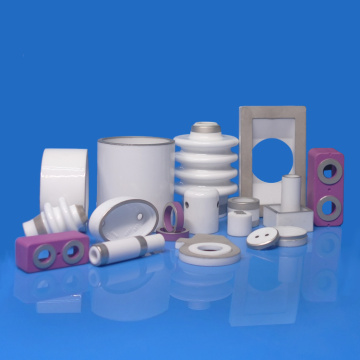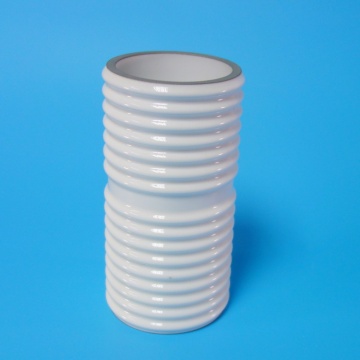Vacuum Ceramic Component
In modern industry, Metallized Ceramic Parts are widely used in many electronic vacuum devices, such as electron tubes, high-voltage feedthroughs, high-current feedthroughs, vacuum interrupters, vacuum capacitors/thyristors, X-ray tubes and power switches.
The key to making vacuum ceramic components is to cover the ceramic surface with a metal coating to achieve vacuum tightness and sealing. In order to achieve better brazing effect, or to protect the metal layer, we usually plate other metals on the outside of the metal layer, such as nickel plating, silver plating, gold plating, copper plating, tin plating, etc. The Metallized Ceramics produced by our company have the following characteristics:
- Extremely high bond/brazing strength
- High mechanical strength
- Good vacuum tightness
- Excellent electrical insulation
-
Unit Price:0.5~50USDBrand:Jinghui CeramicsMin. Order:Piece/PiecesModel No:CustomizedTransportation:Ocean,Land,Air,Express,ExpressPackaging:Vacumm packaging with export cartonSupply Ability:2,000,000pcs/monthPlace of Origin:ChinaProductivity:500,000pcs/monthIndustrial Vacuum Ceramic Component with Metallization Vacuum ceramic component with metallization is a very special technical ceramic parts in the electronic and electrical application. It can achieve metal to ceramic joining by means of brazing...
-
Unit Price:USD 30 - 50 / Piece/PiecesBrand:Jinghui CeramicsMin. Order:Piece/PiecesModel No:CustomizedTransportation:Ocean,Land,Air,Express,ExpressPackaging:Vacumm packaging with export cartonSupply Ability:200,000pcs/monthPlace of Origin:ChinaProductivity:50,000pcs/monthHigh Purity Alumina Metallized Ceramic Tubing We take use of advanced technology to provide industry extensive metallized ceramics, it covers a selection of raw materials to be the base of metallized ceramic components, for example aluminum oxide,...
-
Unit Price:USD 3 - 5 / Piece/PiecesBrand:Jinghui CeramicsModel No:CustomizedTransportation:Ocean,Land,Air,Express,ExpressPackaging:Vacumm packagingSupply Ability:200,000pcs/monthPlace of Origin:ChinaProductivity:50,000pcs/monthMo/Mn Metallized Ceramic Tube JingHui supplys a great many of precision metalized ceramic tubes in high purity alumina. These metalized ceramics are widely used in a variety of high voltage, high current devices for the military, medical and...
-
Unit Price:0.8~5USDBrand:Jinghui CeramicsMin. Order:Piece/PiecesModel No:CustomizedTransportation:Ocean,Land,Air,Express,ExpressPackaging:Vacumm packaging with export cartonSupply Ability:200,000pcs/monthPlace of Origin:ChinaProductivity:50,000pcs/monthCeramic Insulator Covered by Nickle Plating The metallization of aluminum oxide ceramics (min. 94.4% alumina) was performed by molybdenum-manganese process in hydrogen and nitrogen reduced atmosphere under 1250℃ ~1450℃ cured. After the sintering,...
FAQ
Important things you should know




2. 100% Full Inspection Before Shipment: Pick out products that are undersized or have metallization layer defects.

1. Power electronics field: representative product: vacuum switch tube. The excellent insulation of the vacuum inside the tube enables the medium and high-voltage circuit to quickly extinguish the arc and suppress the current after cutting off the power supply, thereby achieving the function of safely breaking the circuit and controlling the power grid.







